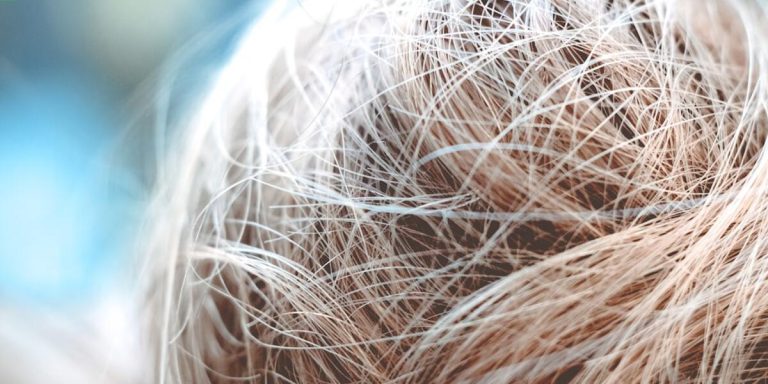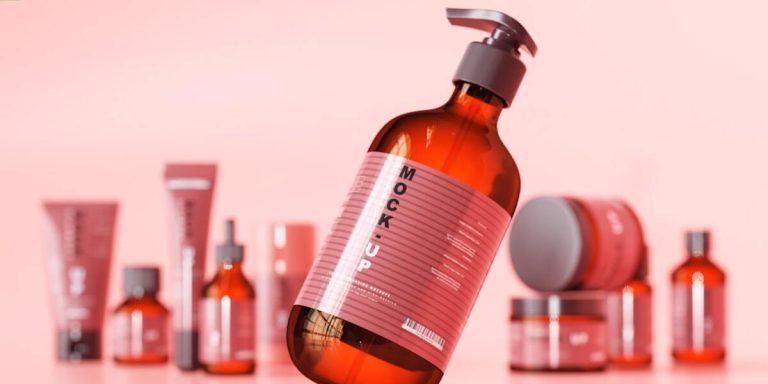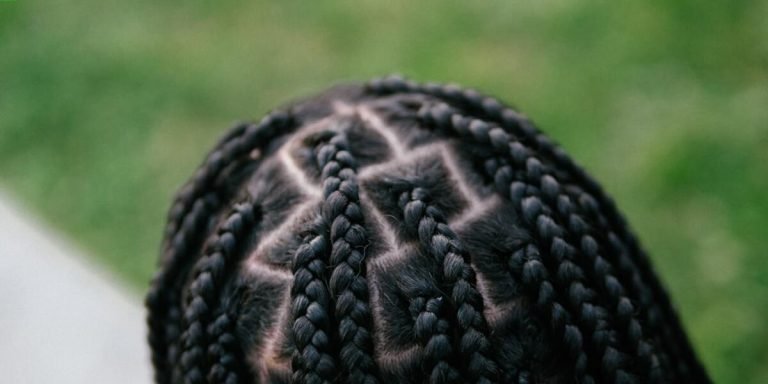Hair Care Routine for Curly Hair: A Comprehensive Guide to Manage and Maintain Lustrous Curls
Embarking on a dedicated hair care routine for curly hair isn’t always an easy task. Unlike straight and wavy locks, curls demand particular attention to flourish. Those with ringlets understand that their mane often seems to have a mind of its own and calls for special treatments tailored specifically to them.
From taming those unruly cuticles using the right shampoos or conditioners, hydrating with moisture-rich creams or oils, preserving the curl pattern during sleep, down to brushing techniques; everything forms part of this comprehensive yet delicate regimen aimed at serving your spirals best in terms of maintenance and manageability.
Did you know?
Did you know? Curly hair is naturally drier than straight hair because the natural oils produced by your scalp struggle to travel down the twisted strands, making adequate hydration a vital aspect of curly hair care.
Understanding Curly Hair: The Basics of Structure and Texture
Curly hair, by nature, is unique and exquisite. It exhibits an intrinsic structural difference from straight or wavy locks that makes it need special attention when devising a hair care routine in 2023. This basic structure of curly hair determines its texture and the way curls form making each strand distinctive.
Delving into the science of this marvelous wonder, let’s comprehend what sets your ringlets apart from other types. The follicle shape plays a crucial role- oval-shaped follicles give birth to curly strands while round ones usually result in straight hairs as they grow out uniformly with no curves or bends formed along their length.
Moreover, sebum distribution across these spiral turns greatly affects how you should take care of your twirls since oils find it challenging due to twisted paths to travel down from root till tip which often leaves ends dry causing frizziness – one common issue most people struggle with having corkscrew tresses.
Equipped with this fundamental knowledge about curl anatomy now paves our path towards establishing a precise ‘Hair Care Routine’ uniquely curated for all those proudly wearing their gorgeous spirals!
Identifying Your Curl Type: A Guide to Customized Care
Knowing what type of curls you have is the first step in establishing a hair care routine for curly hair. This knowledge can guide you towards picking out the right products and techniques, which are crucial to maintaining healthy curls.
Firstly, it’s essential to know that there isn’t just one type of ‘curly’ – curl patterns can range from loose waves to tight coils. Often, people with curly hair find they may not fit into one exact category as their locks might comprise varying textures and types.
So let’s delve into some common curl classifications:
1. Wavy Hair (Type 2): If your strands tend to form an S pattern rather than coiling or curving dramatically, then welcome aboard Team Type 2! Your waves need lightweight hydration so they don’t get weighed down by heavy products.
2. Curly Hair (Type 3): Formed in springy spirals or ringlets that resemble corkscrews; these bounce back when stretched slightly – calling all Type 3 Curlies!
3. Coily Hair (Type 4): Patient holders of this texture experience tightly coiled strands that zig-zag rather than spiral – say hello if you’re on team Type-4!
Once we’ve determined our specific class within this broad spectrum known as “curled” or “textured,” we’re better equipped for effective customizing our regimen specifically designed toward promoting growth while preserving overall healthiness among our unique structures.
The Science Behind Curls: How Hair Porosity Influences Maintenance
Curls are a marvel of nature, each twist and turn unique in its structure. The science behind them is fascinating and can be pivotal to your hair care routine for curly hair.
Imagine it as sponges with millions of invisible openings that open or close based on various factors like pH balance, temperature changes etc., which exert huge control over our tress health. When these pores work optimally absorbing just enough product but not too much; shiny bouncy ringlets follow naturally.
However when they aren’t functioning right due to damage or genetics – dryness, frizz even breakage may ensue leading everyone thinking “bad-hair-day-everyday”. This is where understanding comes in handy while devising an effective hair care routine for curly hair because knowledge empowers you to nourish those curls back into their glorious best self!
To test porosity levels at home, perform a simple float test. If your strands sink quickly, you have high porosity and open cuticles. If they sink slowly, you have low-porosity with tightened cuticles. After identifying your porosity level, follow tips specifically designed for your curl type.
High Porous Curls: Require heavier products containing rich oils/serums that fill gaps between opened up cuticle cells sealing hydration within.
Essential Steps in a Curly Hair Care Routine
Step one in establishing a valuable hair care routine for curly hair begins with understanding the unique needs of your tresses. Given that every curl is different, it’s essential to adopt a personalized approach that will ensure they remain well-nourished and beautifully intact. In 2023, we have at our disposal an array of high-quality products specifically designed for treating curly locks from sulfate-free shampoos to leave-in conditioners brimming with natural oils.
The second step takes us further into enhancing moisture retention which can be achieved through deep conditioning treatments or incorporating more hydrating elements like argan oil or shea butter into your regimen. Curly hair tends to be drier than other types because its spiral structure makes it harder for the scalp’s natural oils to travel down the length of each strand; thus making hydration particularly crucial.
Finally, adopting gentler styling techniques forms a key part in this journey towards maintaining luscious curls—a process as important as selecting quality products! Switching out harsh combs and brushes for wider-toothed alternatives can minimize breakage while scrunching instead of rubbing after washes encourages healthier coil formation without causing unnecessary frizz.
Cleansing Techniques for Healthy Curls
Curly hair is unique, and treating it with special care can yield fantastic results. Here are some cleansing techniques you should consider for your hair care routine for curly hair.
Begin by selecting a sulfate-free shampoo. These types of shampoos are milder and will clean your curls without stripping them off their natural oils. They help to maintain the moisture balance that’s very crucial in preserving curl definition.
Before washing your curly locks, detangle them gently using a wide-toothed comb or fingers while dry or lightly dampened with conditioner – this minimizes breakage during the wash process.
Deep cleanse once every week if you use heavy products like gels and creams often; these can cause product buildup leaving curls lifeless over time. Try using Apple Cider Vinegar (ACV) rinse as part of this deep cleanses; ACV helps remove stubborn residue effectively.
Next on our list is co-washing – short for “conditioner-only washing”. It serves to hydrate the strands reinforcing shine & softness without removing essential scalp oils—something regular shampoos may do unintentionally—making it an excellent mid-week refresh option between thorough wash days.
Hydration Secrets: Choosing the Right Conditioners and Leave-In Products
In managing curly hair, a key principle is hydration. The ideal hair care routine for curly hair should encompass adequate moisturization to tame frizz and keep your curls bouncing with joy. Among numerous steps crucial to this process are choosing the right conditioners and leave-in products.
Conditioners come in three main types: rinse-out, deep conditioners, and leave-ins. Rinse-out versions often provide instant detangling solutions while taking showers but might not supply ample hydration for very dry or coarse textures.
On the other hand, deep conditioners serve as intensive treatments meant to restore health back into stressed tresses via ingredients like keratin proteins or argan oil— aim at using these once every week for optimal results.
Leave-in products represent another invaluable piece within our puzzle—they remain on your locks throughout an entire day thereby continuously providing necessary nutrients & protection against environmental aggressors alike!
Remember also that natural ingredients tend outperform synthetic ones when it comes to truly benefiting our scalp/hair over time – so look out labels stating ‘organic’ / ‘natural’.
Advanced Treatments and Styling Tips for Curly Hair
Embracing the natural texture of your curls is a key part of maintaining healthy hair in 2023. Curly hair can require some extra love and attention, but with advanced treatments, it doesn’t have to be a daunting task. The first step towards embracing this beauty starts at home, by aligning your care routine specifically for curly hair.
Technology has revolutionized personal grooming, offering modern tools and ingredients for curly hair treatment. Products infused with essential oils such as coconut oil or argan oil hydrate deeply and enhance curl definition, drastically reducing frizz—a major concern in managing curly locks.
To take good care of your waves and spirals, implement the following styling tips:
- Use diffusers when blow-drying to distribute heat evenly and reduce damage.
- Practice ‘pineappling’ by loosely gathering your hair on top of your head before bed to maintain shape and bounce.
- Get regular trims to remove split ends for healthier-looking hair over time.
Deep Conditioning and Protein Treatments for Enhanced Elasticity
Keeping your curls healthy, bouncy and frizz-free requires a little extra care. Let’s get into the specifics of how you can incorporate deep conditioning and protein treatments for enhanced elasticity in your hair care routine for curly hair.
Now let us introduce proteins – our secret weapon! Our hair strands primarily comprise keratin- a type of protein which makes the role of protein-based products rather significant within any effective regimen meant for curl upkeep. However, moderation holds paramount importance here as too much protein might end up making the mane stiff leading to brittleness instead hence keeping check on frequency becomes important.
However worrisome these may sound initially; These steps aren’t nearly as complicated as they seem once streamlined within one’s routine schedule.
Enhancing elastic glossiness via proper nourishment calls upon usage specialized high-quality conditioners tailored specifically towards handling coily waves while ensuring necessary hydration is met at all ends simultaneously working on strengthening weak regions along shafts thus successful propagation improved flexibility leaving behind glossy defined spirals post every wash session!
Defining Curls Without Crunch: A Look at Stylers and Gels
Perfecting the art of defining curls without giving them a crunch is an integral part of the hair care routine for curly hair. The secret lies in using stylers and gels aptly, to give your locks a boost while maintaining their natural texture.
Every curl needs good definition to show off its uniqueness, however achieving this can be tricky especially when one wants to avoid that unpleasant crunchy feeling. That’s where styling products come into play – they help tame frizz and define each twist and twirl with finesse.
Stylers are designed to mold or shape hair based on individual preference. They provide control over how your strands behave – whether you want defined ringlets or loose waves; every look is achievable through proper application of these tools which results in providing shaping power we all crave for our curls.
Gels work differently than stylers but yield similar end goal: enhancing & preserving curl pattern while minimizing flyaways making them another essential product within most curly-haired people’s arsenal. Unlike conventional options available out there, many modern-day versions do not leave residue behind hence no more flakey or greasy deposits!
1) **Prepping**: Begin by washing your hair thoroughly with shampoo followed by conditioner suitable for curly tresses. This preps it up by removing dirt build-up ensuring better absorption of subsequent ingredients applied.
Conclusion
As we draw the curtains on our comprehensive guide, let’s ensure your hair care routine for curly hair becomes as natural to you as breathing. Remember, maintaining lustrous curls is not a herculean task; it just needs commitment and some tender loving care. It’s all about understanding what works best for your unique curl pattern.
Feel free to navigate through our website where we’ve curated more insightful tips and tricks that will help elevate your Hair Care and Maintenance game. With every strand of information carefully spun together, let us be the wind beneath those beautiful spiraling locks! Don’t hold back – dive in now!







